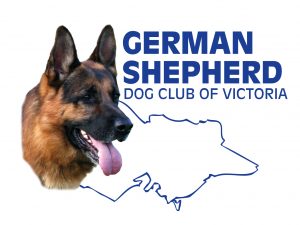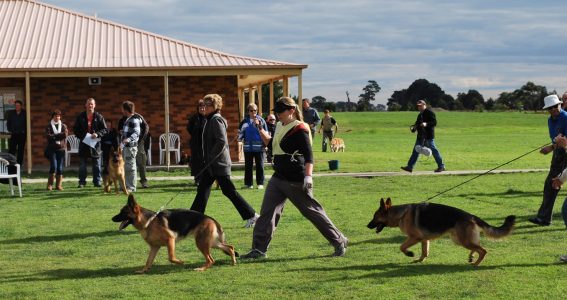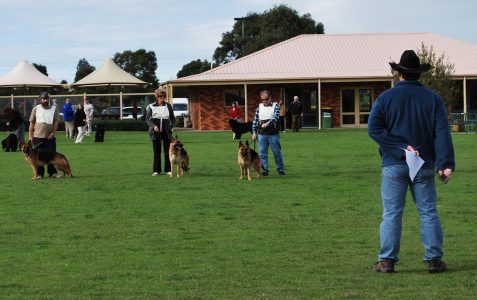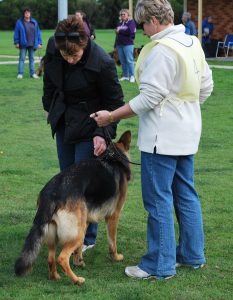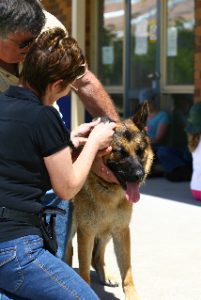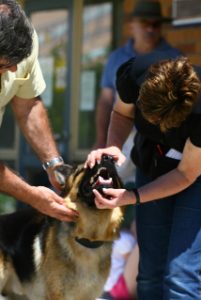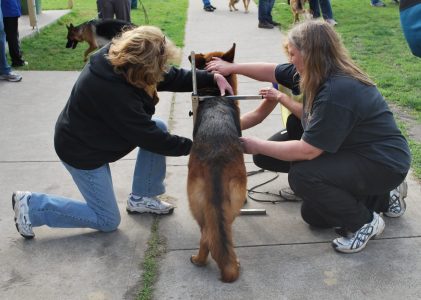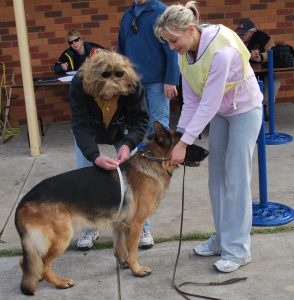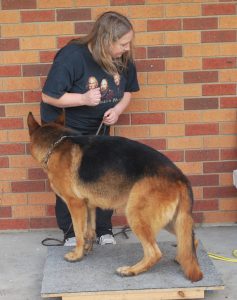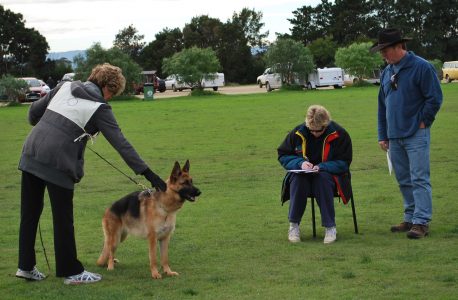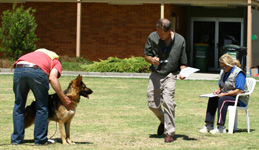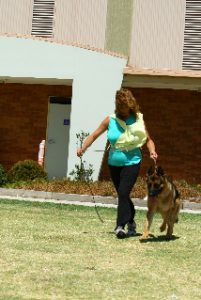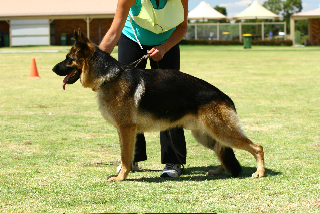So You Would Like to Breed Survey Your Dog?
If you are thinking of putting your dog through the GSDCV Breed Survey, there are a number of things you must do and prepare for before the actual day of the Breed Survey.
Read the detailed article and watch the video below for all the information you need to know.
BREED SURVEY – WHAT’S IT ALL ABOUT?
by Jenny Yuen, GSDCV Breed Affairs Administrator
Photos courtesy Barbara Stone and Steve Mase
Breed Survey_Whats it all about
OBJECTIVES: To promote and offer guidance for the uniform development of the German Shepherd Dog and to improve its inherent working abilities
It is expected that animals that are successfully Breed Survey Classified will contribute to the overall improvement of the breed in Australia.
The Victorian Survey Panel: Vince Tantaro, Alastair Henderson, Jenny Yuen, Greg Green and Ian Urie.
Surveyors have a strict set of criteria to meet prior to applying for and achieving Breed Surveyor status. This involves both breeding achievement and participation at State Club administration level. They must also have the support of their State Club and their fellow Surveyors via the National Breed Commission meeting. This ensures they have the experience and expertise required to appropriately survey the German Shepherd dog.
HOW DO I GO ABOUT IT?
It is a good idea to come along and watch a survey prior to taking part so you will have a better understanding of the procedure
1. To be presented the dog/bitch concerned must be:
No less than 18 months and no more than 8 years of age.
Must be registered with the State Canine Control on the Main Register (Blue form) and must not be desexed.
Must be positively identified:
– For animals born prior to 1 July 2017, by Tattoo through the GSDCA National Tattoo Scheme or a GSDCA recognised Tattoo scheme; or by microchip.
– For animals born after 1 July 2017the only acceptable identification method will be microchipping.
Possess a GSDCA ‘A’ Stamp for hip dysplasia and a ‘Z’ Stamp for Elbow dysplasia or a suitable equivalent accepted by the German Shepherd Dog Council of Australia (GSDCA).
Animals born after 1 July 2018 must not have any linebreeding closer than (3-3). Animals born prior to 1 July 2018 must not have any linebreeding closer than (3-2) or (2-3).
2. Applying for Breed Survey
An Application for Survey Form (GSDCA BS1) may be downloaded from the GSDCA website. Look under About Us then click on Forms. Alternatively contact the Victorian State Breed Survey Registrar Gillian Cafari on 03 5420 7385. The completed form together with the relevant paperwork must be received by the registrar at least 7 days prior to the Survey date.
Relevant Paperwork
a. The required fee.
b. A copy of the ANKC registration certificate (blue form) in the name of the owner. Note: animals on the limited register cannot be accepted for Survey.
c. Copies of ‘A’ and ‘Z’ Stamp results/certificate.
d. Five generation pedigree.
e. For all imported animals a copy of the Title Verification Certificate as received from the GSDCA Title Verification Registrar.
f. For previously presented animals that have failed survey, a copy of the GSDCA Form BS2-Notification of Failure must be supplied.
g. A coloured, high resolution photograph is to be supplied to the NBC Chair within 7 days of the survey. You can update the photograph at a later date if a better one becomes available.
3. On the Day
- Give yourself time, arrive early. Your dog should be clean and well groomed. Remember the German Shepherd is a working dog not a ‘couch potato’ so he should be presented in a relatively fit, athletic condition
NB All the relevant documentation (see above) in its original form must be brought to the survey and shown to the officiating SURVEYOR on the day
The Survey begins
You need to report to the Registrar. You will be given a numbered vest. The microchip will be verified. The attending dogs will be lined up, first the dogs then the bitches. All the animals in the survey will then undertake some warm-up laps. The Surveyors will discuss the animals and their potential classifications.
On the move – dogs are moved around the ring
The Guntest BANG BANG The dog should stand firmly showing no concern or agitation
The Crowd Test – The dog is walked into the crowd on a loose lead. The surveyors observe the behaviour. He should be calm, confident and relaxed
The Individual Approach – Again the dog should be calm, confident and relaxed
The Vital Statistics: The Victorian Breed Survey Registrar Gillian Cafari collates and checks the paperwork prior to the Survey. You will report to her upon arrival. On the day Gill records the vital statistics as determined by the Surveyors- microchip, height, chest depth and circumference, weight, testicles and dentition.
Checking the bite. It should be a scissor bite neither over or undershot
Checking the teeth. Any variations/abnormalities are noted
Measuring the height, depth of chest and chest circumference Now on to the scales
Has he got 2 normal descended testicles?
The Individual Assessment
Now down to the details. All aspects of the dog are critiqued from his head right down to the colour of his toe nails, his temperament and movement
The general description is recorded – Does she stand correctly?
Are the nails dark? Hocks and elbows. Are they firm? Is he stepping correctly?
The very detailed Survey form is completed with the dog’s Particular Virtues and Faults noted. The classification is announced and finally the Breeding advice is given
The Survey concludes with the successful animals introduced to the spectators with a brief explanation
A photo of your dog/bitch MUST be forwarded to the National Breed Commission Chairperson within 7 days of the Survey.
The Survey photo is included in the database and is a lifetime record of your dog so ensure you send a quality photo. You can access your survey on the GSDCA data base
Watch the video below to find out all about Breed Survey
Watch the video below to find out all about Breed Survey – watch the dogs at survey, see what happens, whats involved and what does it all mean? (12min video, 80MB)
